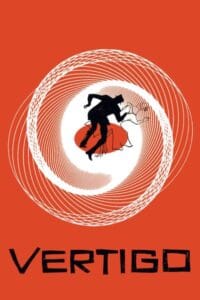“Under The Tuscan Sun,” the beloved film based on Frances Mayes’ memoir, takes viewers on a captivating journey through the sun-soaked landscapes and charming towns of Italy and the bustling streets of San Francisco. Have you ever stopped to wonder where this cinematic masterpiece came to life? The story behind its creation is as captivating as the film itself! What locations and settings contributed to the film’s enchanting atmosphere? In this article, we’ll explore the various city locations, the types of places showcased, the stylistic choices in buildings, and the specific scenes that make this film unforgettable.
City Locations
The film’s stunning visuals are largely attributed to its diverse filming locations in Italy and the United States. Key cities featured in the movie include:
- Arezzo: Nestled in central Tuscany, Arezzo is famous for its medieval architecture and vibrant arts scene. The historical charm and picturesque surroundings provide an ideal backdrop for the film, enriching its romantic storyline.
- Cortona: This hilltop town is one of the film’s star locations, offering breathtaking views of the countryside. Its cobblestone streets and classic Tuscan architecture play a significant role in showcasing Frances’s journey of self-discovery.
- Rome: The Eternal City serves as a key backdrop in Frances’s transition from her life in California to her adventures in Italy. Iconic landmarks and bustling streets highlight the contrast between her past and the new experiences awaiting her.
- San Biagio: This iconic church, set amidst rolling hills and vineyards, captures the essence of Tuscan beauty and serenity. Its serene atmosphere resonates with the film’s themes of renewal and hope.
- Amalfi Coast: Known for its stunning cliffs and crystal-clear waters, the Amalfi Coast adds a touch of luxury and romance to the film. It perfectly encapsulates the idyllic nature of Italy that many dream of experiencing.
- San Francisco: The contrast between sunny California and the picturesque landscapes of Italy is emphasized by the scenes shot in San Francisco, showcasing Frances’s life before her transformative journey.
Location Types
In “Under The Tuscan Sun,” a variety of location types are explored, reflecting the film’s rich tapestry of experiences. These locations include:
- Architectural: The film features beautiful architecture that tells a story of history and culture, from ancient buildings in Rome to the rustic charm of Tuscan villas.
- Apartment: Frances’s new home, a beautifully restored villa, becomes a character in itself. Its warm interiors and inviting atmosphere symbolize her journey of rebuilding her life.
- Artsy: The film embraces an artistic vibe, showcasing art galleries and local artisans that highlight the creativity flourishing in Italy.
- Cabins and Houses: The unique design and rustic charm of Tuscan homes offer a sense of comfort and belonging, echoing Frances’s emotional journey throughout the film.
- Mediterranean and NatureScapes: The organic beauty of the Italian countryside is portrayed through lush vineyards, rolling hills, and serene landscapes, inviting viewers to immerse themselves in the enchanting scenery.
- Rustic: The film effectively showcases rustic settings that evoke warmth and nostalgia, enhancing the film’s overall theme of finding solace and rebuilding.
- Banks, Galleries, Religious venues, Restaurants and Retail: Various establishments feature prominently, enriching the narrative and providing glimpses into daily life in Italy.
- Theatres: The film’s poignant moments are often set against the backdrop of theatres, where Frances experiences key turning points in her journey.
Location Styles
The visual aesthetics of “Under The Tuscan Sun” are defined not just by the breathtaking locations, but also by the unique architectural styles. These include:
- Bungalow: Although traditional, this style adds a cozy charm that resonates with audiences, echoing the comfort of home.
- Bus, Classic Car, Classic Truck: The choice of transportation in the film, especially the classic vehicles, reflects the nostalgia and romanticism of Frances’s journey through Italy.
- Mediterranean and Bungalow styles: These styles not only characterize the settings but also encapsulate the warmth of the Italian lifestyle.
- Pick-Up and Plane: These transport types signify the adventure and spontaneity Frances embarks upon in her quest for love and renewal.
- Scooter and Van: These modern elements represent both the contemporary aspects of her life and the whimsical spirit of travel that pervades the film.
About Under The Tuscan Sun
“Under The Tuscan Sun” was released in 2003 and quickly became a fan-favourite, known for its stunning visuals, captivating storyline, and themes of self-discovery and the pursuit of happiness. Following the journey of Frances, a writer who purchases a dilapidated villa in Tuscany after a painful divorce, the film unfolds as she navigates new friendships, love, and the beauty of starting over. With its blend of romance, comedy, and heartfelt moments, the film resonates with those seeking inspiration for change and adventure in their own lives.
Under The Tuscan Sun Locations
The movie effectively showcases Italy’s diverse locales, portraying the vibrancy and romantic allure of the region. Each location serves its narrative purpose, drawing the viewer into Frances’s transformative adventure. The picturesque streets of Cortona, the tranquil countryside, and the bustling markets serve not only as backdrops but as integral elements that elevate the story. The film highlights the synergy between Frances’s personal growth and her environment, illustrating how the beauty of the surroundings enhances her journey.
Frances talks to a man on the terrace scene in Under the Tuscan Sun
One of the film’s memorable moments occurs when Frances engages in a heartfelt conversation with a man on the terrace of her villa. This scene encapsulates the spirit of camaraderie and connection that characterises her adventure in Tuscany. The terrace, with its stunning views, becomes a symbol of potential and new beginnings. As they discuss life, love, and the choices we make, viewers can sense Frances’s shifting perspective and growing courage to embrace the unknown.
Frances walks the streets of Rome and runs into Katherine scene in Under The Tuscan Sun
In a pivotal scene, Frances wanders the historic, cobblestone streets of Rome, enveloped in thought and reflection, when she unexpectedly encounters Katherine, a fellow American who is also on her own journey of self-discovery. This chance meeting occurs near a charming café, where the aroma of freshly brewed espresso mingles with the sounds of lively conversations around them. Their encounter beautifully encapsulates the film’s theme of serendipity and the chance connections that can lead to profound transformation in one’s life. The vibrant city streets, adorned with centuries-old architecture and bustling with tourists and locals alike, provide a dynamic backdrop as Frances and Katherine share their stories and insights. Through their heartfelt conversations and the exploration of the city together, Frances begins to navigate her own complex emotions, ultimately setting the stage for newfound wisdom and insight that will resonate deeply within her journey.
Frances arrives at her new home scene in Under The Tuscan Sun
Frances’s arrival at her new home marks a transformative moment in the film, setting the stage for her personal evolution. As she approaches the entrance of the dilapidated villa, viewers are drawn into her complex emotions—a mix of excitement and trepidation swirls within her as she contemplates the myriad challenges and opportunities that lie ahead. This pivotal scene powerfully symbolizes the leap of faith she is undertaking, moving from the comforting familiarity of her past into the vast unknown.
The villa itself, with its peeling walls and untamed gardens overrun with wildflowers, serves as a poignant reflection of her metaphorical journey. Each creak of the floorboards and every shadow cast by the sun highlights the potential for renewal and transformation. Frances is not just stepping into a new physical space; she is embarking on a profound journey of self-discovery and growth, nurturing and restoring herself amid the chaos and unpredictability of life. This setting becomes a character in its own right, embodying the struggle and beauty of reinvention as Frances learns to embrace both the challenges and the beauty that comes with starting anew.
Frances and Katherine stroll after a meal scene in Under The Tuscan Sun
After enjoying a delightful meal together at a quaint little trattoria, where the aroma of traditional Tuscan dishes filled the air, Frances and Katherine stroll through the enchanting streets of Cortona. The sun begins to set, casting a golden hue over the cobblestone pathways, as they bask in the warmth of their friendship and the shared experiences that have brought them closer. This picturesque scene highlights the beauty of connection and the healing power of camaraderie, as every corner of the town seems to resonate with their laughter and joy.
The lively atmosphere of Cortona, with its vibrant colors, from the blooming flowers in window boxes to the rust-red rooftops, and the charming architecture of ancient stone buildings, provides the perfect backdrop for this moment of camaraderie and rejuvenation. As they wander past artisanal shops and small galleries, the sounds of street musicians fill the air, creating a soundtrack for their memories in the making.
As they laugh and share stories about their lives, dreams, and aspirations, viewers witness Frances’s emotional walls slowly crumbling, revealing her vulnerability and openness as she embraces a newfound sense of belonging. The connection between them deepens, making the magic of the evening even more profound, as if the universe itself is celebrating their friendship.
Frances and her construction worker go to watch a movie in the theatre
One of the most memorable locations in the film is the quaint theatre where Frances and her construction worker friend, Martini, go to watch a movie. This charming setting, complete with vintage decor and the enticing aroma of popcorn, represents not only the rich cultural experiences that Italy has to offer but also serves as a pivotal moment for Frances’s character development. As she sits in awe of the performance, the flickering light of the screen illuminating her face, she is surrounded by locals laughing and enjoying their evening together, creating a vibrant atmosphere. In that moment, she begins to embrace her new home and culture, feeling a sense of belonging that she hadn’t experienced before. This scene beautifully reflects how our surroundings can shape our perspectives, encouraging us to step outside our comfort zones and open ourselves up to new possibilities and experiences that life has to offer. It’s a powerful reminder of the impact that a simple night at the movies can have on one’s journey of self-discovery and cultural appreciation.
Frances clings onto a stranger in chase scene in Under The Tuscan Sun
In an amusing yet heartwarming scene, Frances finds herself in the vibrant streets of Rome, where she unexpectedly chases after a stranger, clinging onto him for dear life as they weave through the bustling crowd. The temperature is warm, and the aroma of fresh pasta and gelato fills the air, adding to the lively atmosphere. This playful chase not only symbolizes her journey to let go of her fears but also marks a pivotal moment where she embraces the thrill and spontaneity of life. The lively city streets, filled with tourists and locals alike, serve as a striking contrast to Frances’s typically reserved personality, emphasizing her growth and newfound sense of adventure. As she lets go of her inhibitions, she discovers the joy of spontaneity, finding herself laughing and exhilarated in a city that invites exploration and connection. This moment becomes a testament to her evolving spirit, reminding her that sometimes, the best experiences come from stepping out of one’s comfort zone.
Conclusion
“Under The Tuscan Sun” is a visually stunning film that showcases both the beauty of Italy and the transformative power of travel. Through its use of evocative locations, charming architectural styles, and powerful storytelling, the film inspires viewers to embark on their own journeys of self-discovery and find solace in unexpected places. Ultimately, it is a heartwarming reminder that amidst life’s chaos, there is always hope for new beginnings and renewed happiness. So next time you







